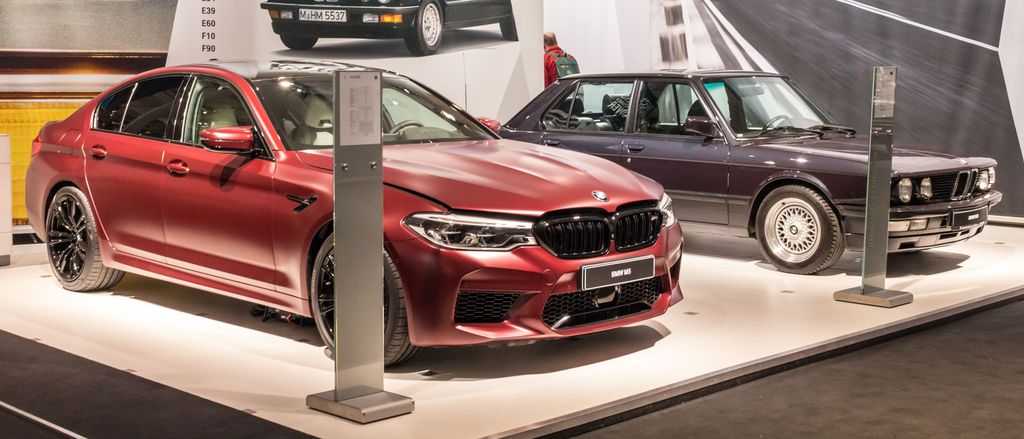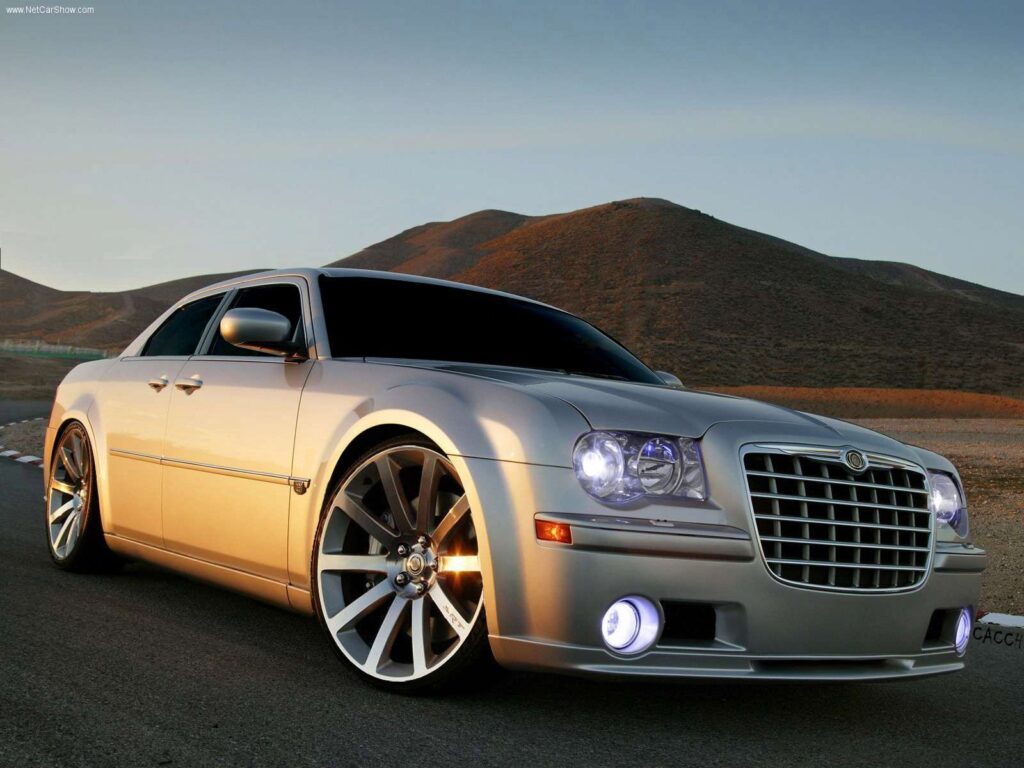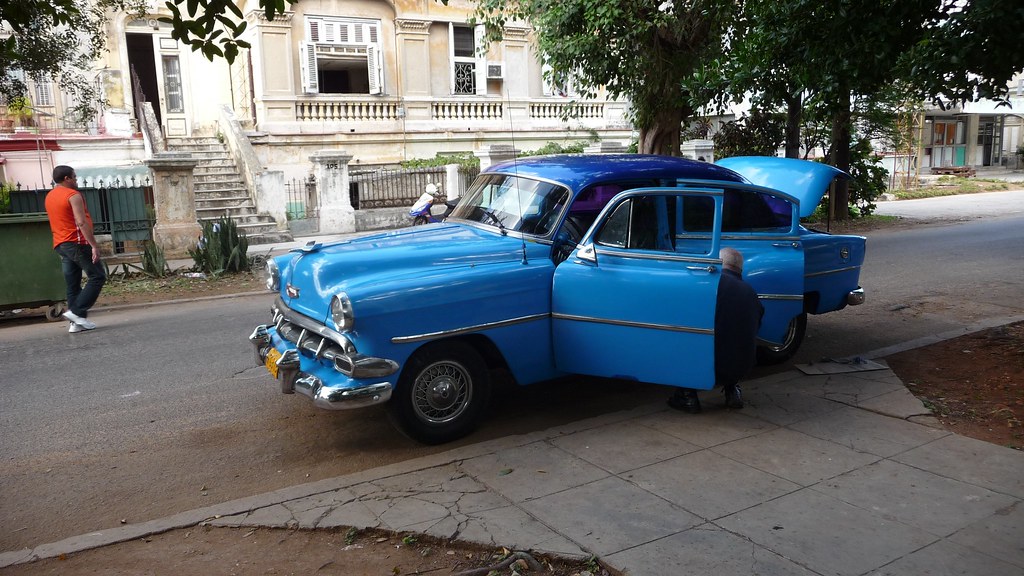
The 1950s—a vibrant era of progress and unyielding commitment to hard work—also forged some of the most iconic and durable trucks in automotive history. These vehicles were more than just transport; they were indispensable partners, the robust backbone of America’s growing industries and expansive agricultural landscapes. They were meticulously engineered for an existence defined by relentless demands, where sheer strength and unwavering reliability were paramount.
This period saw trucks designed primarily for purpose, not for fleeting luxury. Their very essence was built upon a foundation of durability, utilizing materials tough enough to withstand the harshest conditions imaginable. The mechanics were kept straightforward, allowing for repairs in remote locations, a testament to a pragmatic design philosophy. These machines truly embodied a golden age of utilitarian engineering.
As we look back, these vintage trucks stand as enduring symbols of their era. Their sturdy frames, tireless engines, and functional interiors tell tales of countless loads, tilled fields, and demanding construction projects. Join us as we explore the specific attributes that cemented the legendary status of these absolute workhorses, celebrating their unparalleled resilience and unwavering functionality.
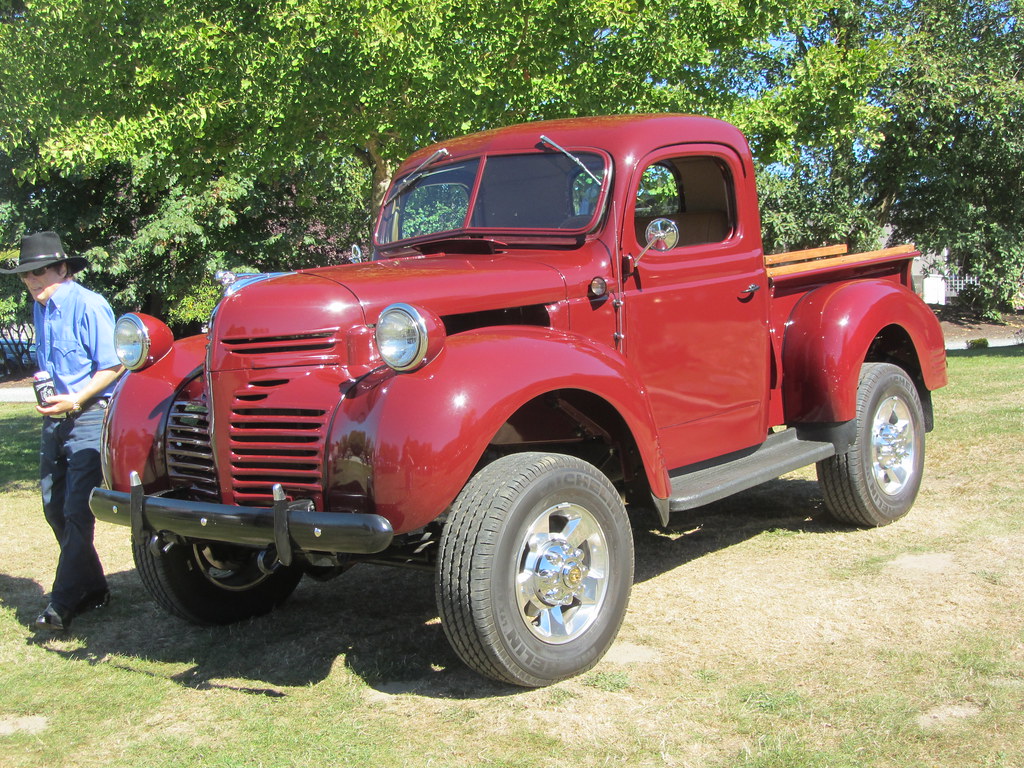
1. **1946–1950 Dodge Power Wagon**Born from the demands of World War II, the Dodge Power Wagon brought military-grade toughness directly to civilian roads. It clearly descended from the robust WC series, inheriting an unmatched level of durability. This truck was explicitly built for rugged individuals demanding supreme capability in challenging environments.
Under its hood, the Power Wagon featured a sturdy 230 cubic-inch flathead six-cylinder engine, paired with a 4-speed manual and a two-speed transfer case. This powertrain was crafted to deliver substantial, low-end torque, making it ideal for difficult terrains and heavy-duty operations. It was a mechanical marvel of its time, designed to excel where others faltered.
With a 1-ton rating and genuine 4-wheel drive, this truck famously “didn’t flinch at hard labor.” Farmers, miners, and loggers relied on its immense power and grip. Its fully boxed frame was a critical design element, enabling ongoing use and frequent rebuilding. These resilient machines often received repairs rather than being scrapped, highlighting their lasting value. The Power Wagon truly embodied a “refused to quit” spirit.

2. **1953–1956 Ford F-100**The second-generation Ford F-100 introduced a clean, new style while retaining its inherent grit. This model masterfully combined aesthetic appeal with the uncompromising functionality of a true workhorse. It quickly became a classic, evolving the Ford F-Series legacy.
Powering the F-100 were reliable inline-sixes or the potent Y-block V8. These engines were lauded for their simplicity and robustness, making them “easy to wrench on.” This ease of maintenance was crucial, contributing significantly to their long operational life in various work settings.
Its chassis boasted a beam axle and leaf-spring setup, specifically engineered to “take punishment.” The interior, though basic, exemplified durable utility with a painted steel dash and a hard bench seat. Many F-100s remain “on the road today,” not just as collectibles, but because “they still run,” a testament to Ford’s commitment to lasting quality.
Car Model Information: 2024 Ford F-250 XL
Name: Ford F-Series
Caption: 2022 Ford F-150 Lariat Luxury
Manufacturer: Ford Motor Company
Aka: Ford Lobo (Mexico, 1992–present)
Production: 1948–present
Class: Pickup truck#Full-size pickup truck
Layout: Front-engine, rear-wheel-drive layout,rear-wheel drive
Predecessor: 1941 Ford
Categories: All-wheel-drive vehicles, All Wikipedia articles written in American English, All articles that may contain original research, All articles with unsourced statements, Articles that may contain original research from September 2020
Summary: The Ford F-Series is a series of light-duty trucks marketed and manufactured by the Ford Motor Company since model year 1948 as a range of full-sized pickup trucks — positioned between Ford’s Ranger and Super Duty pickup trucks. Alongside the F-150 (introduced in 1975), the F-Series also includes the Super Duty series (introduced in 1999), which includes the heavier-duty F-250 through F-450 pickups, F-450/F-550 chassis cabs, and F-600/F-650/F-750 Class 6–8 commercial trucks.
The most popular version of the model line is the F-150 pickup truck, currently in its fourteenth generation (introduced for the 2021 model year). From 1953 to 1983, the entry-level F-Series pickup was the 1⁄2 ton F-100. Starting in 1984, the F-150 became the entry-level. The F-150 has a long-running high-performance off-road trim level introduced for 2010, the (SVT) Raptor currently consisting of three generations. Production of the F-150 SVT Raptor ended in 2014 and was succeeded in 2017 by a new F-150 Raptor, which is based on the thirteenth and fourteenth generation F-150.
The F-Series trucks have been developed into a wide range of design configurations. Alongside medium-duty trucks and “Big Job” conventional trucks (the forerunners of the Ford L-series), the model line has been marketed as a chassis-cab truck and a panel van (a predecessor of the Ford E-Series). The F-Series has served as the platform for various full-sized Ford SUVs, including the Ford Bronco, Ford Expedition/Lincoln Navigator, and Ford Excursion. The F-Series has been marketed by its three North American brands: by Mercury as the M-Series (in Canada from 1948 to 1968), and by Lincoln in the 2000s, as the Blackwood and the later Mark LT (2010s for the latter in Mexico only).
Since 1977, the F-Series has remained the best-selling pickup truck line in the United States; it has been the best-selling vehicle overall since 1981. The F-Series has been the best-selling truck in Canada for over 50 years. As of the 2018 model year, the F-Series generated $41 billion (~$50.3 billion in 2024) in annual revenue for Ford. By January 2022, the F-Series models have sold over 40 million units. Currently, Ford manufactures the F-Series in four facilities in the United States.
Get more information about: Ford F-Series
Buying a high-performing used car >>>
Brand: Ford Model: F-100
Price: $43,735 Mileage: 18,551 mi.

3. **1947–1955 Chevrolet Advance Design**Chevrolet’s Advance Design trucks emerged as postwar pioneers in both style and practicality. Their distinct rounded lines and a notably “wider cab” offered drivers enhanced comfort and a more modern feel. These trucks represented a forward-thinking approach to utility vehicle design.
The trusty 216 or 235 inline-six engines powered these ubiquitous workhorses, celebrated for their unwavering reliability. A “stronger frame than earlier models” further improved their load capacity and structural integrity. These features were vital for demanding work conditions across diverse applications.
These trucks were truly ubiquitous, operating “from farms to city fleets.” Their mechanical “simplicity” made maintenance straightforward, contributing to their impressive longevity. “Parts remained available for years,” ensuring they could be kept running. Many were daily drivers “well into the 1970s,” proving their exceptional durability.
Car Model Information: 2020 Jeep Wrangler Sport
Caption: 1953 Chevrolet 6100 (Advanced Design)
Name: Chevrolet Advance-Design Series
Manufacturer: Chevrolet
Aka: ubl
Production: 1947–1955
Assembly: ubl
Class: Pickup truck
Platform: GM A platform
Related: Chevrolet Suburban#Fourth generation (1955)
BodyStyle: Pickup truck
Predecessor: Chevrolet AK Series
Successor: Chevrolet Task Force
Engine: ubl
Transmission: ubl
Wheelbase: ubl
Abbr: on (1953–1955)
Length: ubl
Weight: convert
Layout: FR layout
Categories: 1950s cars, Articles with short description, Cars introduced in 1947, Chevrolet trucks, Commons category link from Wikidata
Summary: The Advance-Design is a light and medium duty truck series by Chevrolet, their first major redesign after WWII. Its GMC counterpart was the GMC New Design. It was billed as a larger, stronger, and sleeker design in comparison to the earlier AK Series. First available on June 28, 1947, these trucks were sold with various minor changes over the years until March 25, 1955, when the Task Force Series trucks replaced the Advance-Design model.
The same basic design family was used for all of its trucks including the Suburban, panel trucks, canopy express, and cab overs. The cab overs used the same basic cab configuration and similar grille but used a shorter and taller hood and different fenders. The unique cab over fenders and hood required a custom cowl area which makes the cab over engine cabs and normal truck cabs incompatible with one another while all truck cabs of all weights interchange.
From 1947 until 1955, Chevrolet trucks were number one in sales in the United States, with rebranded versions sold at GMC locations.
While General Motors used this front end sheet metal, and to a slightly lesser extent the cab, on all of its trucks except for the cab overs, there are three main sizes of this truck: the half-, three-quarter-, and full-ton capacities in short and long wheelbase.
Get more information about: Chevrolet Advance Design
Buying a high-performing used car >>>
Brand: Chevrolet Model: Advance Design
Price: $25,000 Mileage: 54,707 mi.
Read more about: Timeless Grit and Unyielding Power: Remembering 10 Utility Trucks That Forever Secured Their Workhorse Status
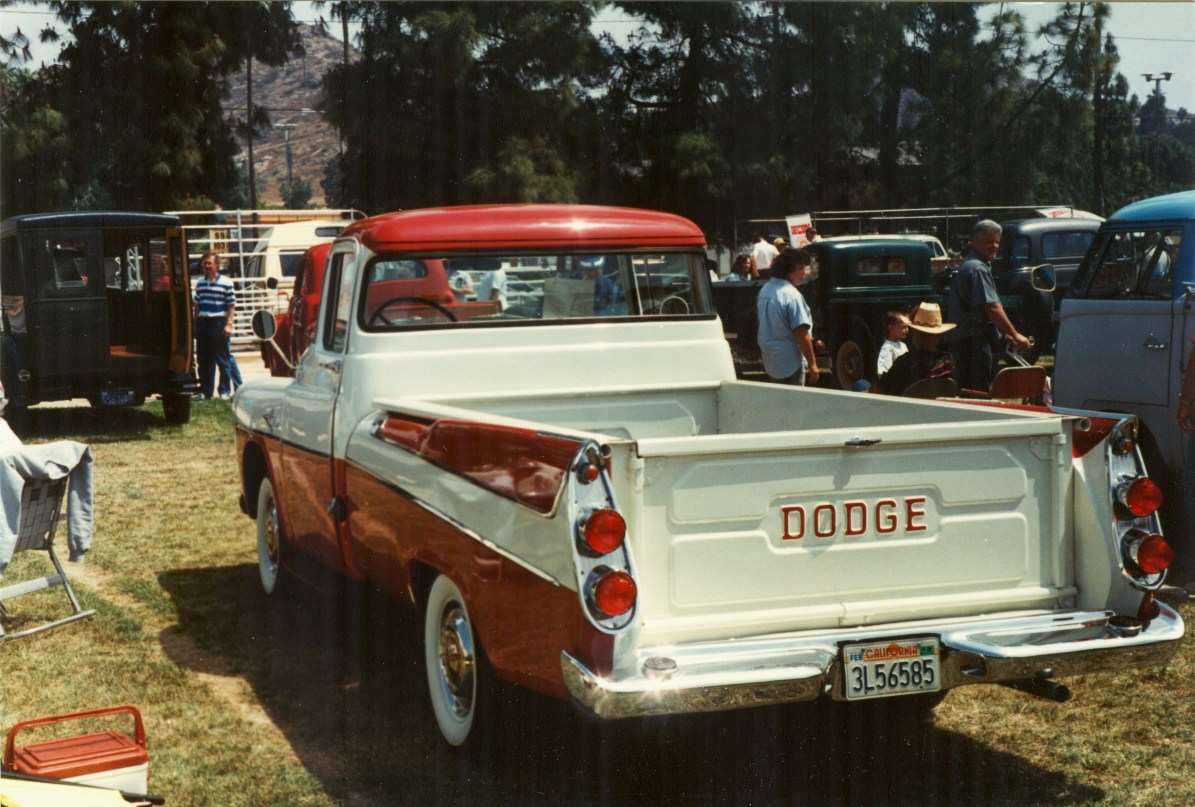
4. **1957–1960 Dodge D-Series Sweptside**The 1957–1960 Dodge D-Series Sweptside boldly blended car-like aesthetics with truck capabilities. It featured stylish two-tone fins and chrome accents, elements usually found on passenger cars. This created a distinctive appearance for a heavy-duty pickup.
Beneath its fashionable exterior, the Sweptside retained its core utility. It possessed “real hauling ability,” supported by heavy-duty rear springs for substantial loads. Optional V8 engines, including the 315 or 325 cubic-inch polyhead, provided ample power. Transmission choices included both manual and the LoadFlite automatic.
Though it “didn’t sell in big numbers,” the Sweptside’s unique look ensured “kept them out of scrap yards.” Its “rugged construction” contributed to the survival of these rare models. This truck stands as a fascinating example of ’50s automotive design experimentation, combining flair with uncompromising truck functionality.

5. **1955–1959 GMC Blue Chip Series**Marketed as “upscale work vehicles,” the GMC Blue Chip Series carved a special niche in the mid-1950s. While sharing its body with the Chevrolet Task Force, GMC instilled a unique identity. These trucks appealed to businesses and individuals seeking professional-grade performance and superior durability.
A key distinction lay in its powertrain. GMC Blue Chip trucks often used “GMC’s own inline-six” engines, or powerful “Pontiac-sourced V8s.” This engine choice allowed for precise tailoring to demanding commercial operations, ensuring robust performance.
Further enhancing their work ethic, these trucks featured “heavier-duty axles” and distinct “trim upgrades.” These were not just cosmetic; they meant greater load capacity and longer operational life. Businesses favored the Blue Chip Series, specifically because “they expected them to last.” Many were specified with 4-speed manuals and continued on job sites “well into the ’80s,” a testament to their enduring build quality.
Car Model Information: 2020 Jeep Wrangler Sport
Caption: 1956 Chevrolet Task Force (3100)
Name: Chevrolet Task Force Series
Manufacturer: Chevrolet
Aka: unbulleted list
Production: 1955–1959
Assembly: unbulleted list
Layout: Front-engine, rear-wheel-drive layout,rear-wheel drive
BodyStyle: pickup truck
Class: Pickup truck,commercial truck
Platform: General Motors A platform (RWD)
Related: Chevrolet Suburban#Fourth generation (1955)
Predecessor: Chevrolet Advance Design
Successor: Chevrolet C/K#First generation (1960–1966)
Engine: unbulleted list
Abbr: on
Transmission: unbulleted list
Wheelbase: unbulleted list
Categories: 1950s cars, Articles with short description, Cars introduced in 1955, Cars of Argentina, Cars of Brazil
Summary: The Chevrolet Task Force (or in some cases, Task-Force) is a light-duty (3100-short bed & 3200-long bed) and medium-duty (3600) truck series by Chevrolet introduced in 1955, its first major redesign since 1947. Known as the Blue Chip in the parallel GMC it had more modern design than the preceding Advance Design without sacrificing ruggedness or durability.
First available on March 25, 1955, these trucks were sold with various minor changes over the years from 1955 (2nd series) until 1957. Model years 1955 and 1956 had the “egg crate grill”. 1955 had the emblems below the lateral line of the front fender, whereas in 1956, the emblem was located above the lateral line and the hood emblem was a bit higher on the hood. In 1957, the grill changed to a more open design and the hood was given “spears” resembling the Bel Air.
In 1958 the series was renamed “Apache”, found on fender emblems, given a second set of headlights, and received other minor changes. The model continued with minor changes through 1959.
In 1960 the truck was replaced by the new C/K Series, but this retained the Apache name for some years.
Get more information about: Chevrolet Task Force
Buying a high-performing used car >>>
Brand: GMC Model: Blue Chip Series
Price: $25,000 Mileage: 54,707 mi.
Read more about: Timeless Grit and Unyielding Power: Remembering 10 Utility Trucks That Forever Secured Their Workhorse Status

6. **1956–1960 Willys Jeep Truck**The 1956–1960 Willys Jeep Truck inherited its strong “DNA with the legendary Jeep CJ.” However, it featured “longer wheelbases and more load capacity,” evolving from an agile off-roader to a serious cargo hauler. This adaptation expanded its utility into agricultural and industrial sectors.
Most Willys trucks initially housed the reliable “134 cubic-inch “Go Devil” four-cylinder,” later upgraded to the “Hurricane” F-head.” These engines, though not fast, were honest workhorses. They provided consistent, dependable output, embodying the truck’s purposeful design.
Its construction was supremely tough, boasting “Dana axles” and a “steel bed.” A notably “tight turning radius” enhanced maneuverability in challenging environments. These were true “4x4s” that thrived “in rural areas where others got stuck.” They proved invaluable for farmers and anyone on rugged terrain.
Their “simple mechanicals” ensured they remained “in use long after newer trucks wore out.” This highlights their inherent robustness and practicality.
Car Model Information: 2020 Jeep Wrangler Sport
Name: Willys Jeep Truck
Manufacturer: Willys-Overland,Willys Motors,Kaiser Jeep
BodyStyle: pickup truck,2-door cab-chassis,2-door stake bed
Production: 1947–1965
Assembly: Toledo, Ohio
Class: Full-size,Pickup truck
Related: Willys Jeep Station Wagon,Willys-Overland Jeepster
Successor: Jeep Gladiator (SJ)
Width: 73.0 in
Abbr: Sfn
Length: 183.8 in
Height: 74.4 in
Weight: convert
Wheelbase: 118 in
Layout: Front-engine, rear-wheel-drive layout,rear-wheel drive
Transmission: Borg-Warner T-90,Manual transmission
Designer: Brooks Stevens
Engine: Willys Go Devil engine,Willys Hurricane engine,Willys Hurricane engine#Super Hurricane,Jeep Tornado engine
Categories: 1940s cars, 1950s cars, 1960s cars, All articles needing additional references, Articles needing additional references from January 2015
Summary: The Willys Jeep Truck is a truck made by Willys-Overland Motors from 1947 to 1965. The styling and engineering of the Jeep Truck was based on Willys’ existing vehicles, the Willys Jeep Station Wagon and the Jeep CJ-2A.
Get more information about: Willys Jeep Truck
Buying a high-performing used car >>>
Brand: Willys Model: Jeep Truck
Price: $25,000 Mileage: 54,707 mi.

7. **1955–1960 Chevrolet Task Force Series**The 1955–1960 Chevrolet Task Force Series ushered in a new design era with its iconic “wraparound windshields,” enhancing visibility and modernization. Crucially, these trucks were built on a “stronger chassis,” providing a robust foundation for their roles as versatile work vehicles. They served across diverse American landscapes with unwavering reliability.
Under the hood, the Task Force series offered proven engines for longevity. Options included the reliable 235 inline-six or the powerful 265 and 283 small-block V8s. Regardless of choice, these powertrains were engineered to “run forever with regular maintenance,” reflecting Chevrolet’s commitment to enduring quality.
The trucks’ functional aspects were impressive. Their beds were “stout,” capable of handling demanding loads without compromise. Cabs provided “decent visibility,” enhancing comfort during long hours of operation.
Extensive “parts interchange” further helped “keep them alive for decades,” simplifying repairs and component sourcing. These trucks “weren’t fancy, but they didn’t need to be.” They excelled at “hauling hay, lumber, and everything in between.”
Our journey through the golden age of American workhorse trucks continues, delving deeper into the machines that built a nation. Having explored some of the foundational giants of the ’50s, we now turn our attention to additional titans of industry and the innovative, yet robust, features that defined their era. These vehicles weren’t just about moving goods; they were about mastering challenges, embodying a blend of raw power and no-nonsense functionality that is deeply admired by automotive enthusiasts today.
Car Model Information: 2024 Jeep Wrangler Sport
Caption: 1956 Chevrolet Task Force (3100)
Name: Chevrolet Task Force Series
Manufacturer: Chevrolet
Aka: unbulleted list
Production: 1955–1959
Assembly: unbulleted list
Layout: Front-engine, rear-wheel-drive layout,rear-wheel drive
BodyStyle: pickup truck
Class: Pickup truck,commercial truck
Platform: General Motors A platform (RWD)
Related: Chevrolet Suburban#Fourth generation (1955)
Predecessor: Chevrolet Advance Design
Successor: Chevrolet C/K#First generation (1960–1966)
Engine: unbulleted list
Abbr: on
Transmission: unbulleted list
Wheelbase: unbulleted list
Categories: 1950s cars, Articles with short description, Cars introduced in 1955, Cars of Argentina, Cars of Brazil
Summary: The Chevrolet Task Force (or in some cases, Task-Force) is a light-duty (3100-short bed & 3200-long bed) and medium-duty (3600) truck series by Chevrolet introduced in 1955, its first major redesign since 1947. Known as the Blue Chip in the parallel GMC it had more modern design than the preceding Advance Design without sacrificing ruggedness or durability.
First available on March 25, 1955, these trucks were sold with various minor changes over the years from 1955 (2nd series) until 1957. Model years 1955 and 1956 had the “egg crate grill”. 1955 had the emblems below the lateral line of the front fender, whereas in 1956, the emblem was located above the lateral line and the hood emblem was a bit higher on the hood. In 1957, the grill changed to a more open design and the hood was given “spears” resembling the Bel Air.
In 1958 the series was renamed “Apache”, found on fender emblems, given a second set of headlights, and received other minor changes. The model continued with minor changes through 1959.
In 1960 the truck was replaced by the new C/K Series, but this retained the Apache name for some years.
Get more information about: Chevrolet Task Force
Buying a high-performing used car >>>
Brand: Chevrolet Model: Task Force Series
Price: $35,495 Mileage: 13,505 mi.
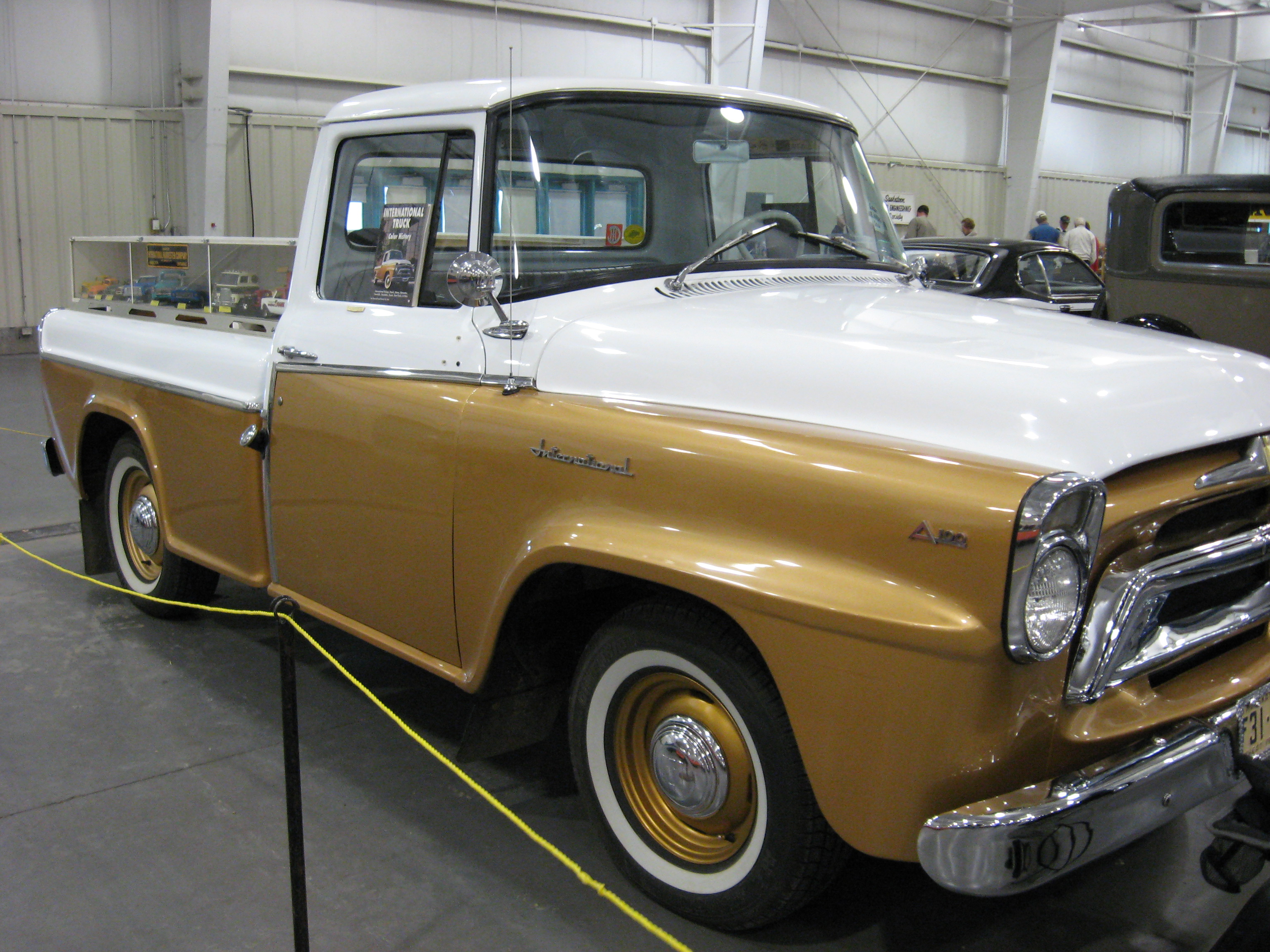
8. **1957–1963 International Harvester A/B Series**International Harvester trucks earned their formidable reputation by prioritizing raw durability and unwavering functionality over mere aesthetic flair. The A/B Series, introduced from 1957, perfectly encapsulated this philosophy, designed as unyielding partners for the most demanding vocations. These trucks were engineered not to follow fleeting trends, but to perform reliably, establishing a formidable legacy as robust machines built to endure.
Underneath their unpretentious exteriors, these International Harvester models boasted heavy-duty frames and full-floating rear axles, components crucial for sustaining continuous, strenuous work. They were powered by robust inline-sixes or potent V8 engines, specifically tuned for steady power delivery rather than high-speed performance. This meticulous engineering ensured they could handle the toughest tasks without complaint, whether on a remote farm, an oil field, or a bustling delivery route.
International Harvester’s commitment to building true workhorses, rather than just conveyances, cemented the A/B Series’ enduring appeal. Their exceptional construction is evident in the fact that many of these venerable trucks continue to operate in rural areas even today, a powerful testament to their inherent strength and the engineering principles that guided their creation. They were not just trucks; they were machines built for a purpose, designed to refuse to quit.
Car Model Information: 2020 Jeep Wrangler Sport
Name: International C series
Caption: International 1200A pickup (1966)
Type: Pickup truck
Manufacturer: International Harvester
Aka: ubl
Production: 1961–1968
BodyStyle: pickup truck
Layout: ubl
Related: International Travelall
Transmission: Manual transmission,Automatic transmission
Wheelbase: convert
Weight: convert
Predecessor: International A series#B
Successor: International Light Line pickup
Sp: us
Categories: 1960s cars, Articles with short description, Commons category link is locally defined, International Harvester vehicles, Pickup trucks
Summary: The International C series and its succeeding models is a series of pickup trucks that were built by International Harvester from 1961 to 1968. They succeeded the earlier B-series range.
Get more information about: International C series
Buying a high-performing used car >>>
Brand: International Harvester Model: A/B Series
Price: $25,000 Mileage: 54,707 mi.

9. **1952–1965 Toyota Land Cruiser FJ45 Pickup**The Toyota Land Cruiser FJ45 pickup emerged as a formidable global contender, serving as Toyota’s robust answer to established off-roaders like the Jeep. Distinct from its SUV counterparts, the FJ45 pickup featured a longer bed, significantly enhancing its utility and cargo capacity. This design choice positioned it as a true workhorse, capable of tackling challenging environments while carrying substantial loads.
What set the FJ45 apart was its superior build quality, immediately evident in its sturdy construction. Power came from Toyota’s own 3.9-liter F-series inline-six engine, reliably producing around 125 horsepower, perfectly mated to a 4-speed manual transmission with part-time 4WD. This powertrain was designed for unwavering reliability and ample low-end torque, not just speed, making it an ideal companion for off-road and heavy-duty tasks across the globe.
The chassis was engineered for extreme conditions, utilizing solid axles and durable leaf springs all around. This robust suspension setup allowed the FJ45 to confidently navigate “bad roads” and the roughest terrains. While relatively rare in the U.S., the FJ45 earned legendary status across continents, demonstrating unparalleled durability in the most unforgiving environments. These trucks ran for decades in deserts, mountains, and jungles, becoming synonymous with toughness and reliability.
Car Model Information: 2020 Jeep Wrangler Sport
Name: Toyota Land Cruiser
Caption: 2021 Toyota Land Cruiser ZX (VJA300, Colombia)
Manufacturer: Toyota
Production: 1951–present
Class: unbulleted list
Layout: Front-engine, four-wheel-drive
Categories: 1960s cars, 1970s cars, 1980s cars, 1990s cars, 2000s cars
Summary: The Toyota Land Cruiser (Japanese: トヨタ・ランドクルーザー, Hepburn: Toyota Rando-Kurūzā), also sometimes spelt as LandCruiser, is a series of four-wheel drive vehicles produced by the Japanese automobile manufacturer Toyota. It is Toyota’s longest running series of models. As of 2019, the sales of the Land Cruiser totalled more than 10 million units worldwide.
Production of the first generation of the Land Cruiser began in 1951. The Land Cruiser has been produced in convertible, hardtop, station wagon and cab chassis body styles. The Land Cruiser’s reliability and longevity have led to huge popularity, especially in Australia, where it is the best-selling body-on-frame, four-wheel drive vehicle. Toyota also extensively tests the Land Cruiser in the Australian outback – considered to be one of the toughest operating environments in both temperature and terrain. In Japan, the Land Cruiser was once exclusive to Toyota Japanese dealerships called Toyota Store.
Since 1990, the smaller variation of the Land Cruiser has been marketed as the Land Cruiser Prado. Described as a ‘light-duty’ version of the Land Cruiser by Toyota, it features a different design compared to the full-size model and, up until 2023, it remains the only comfort-oriented Land Cruiser available with a short-wheelbase 3-door version.
In 2025, an even smaller variation called Land Cruiser FJ was introduced. It is built on the IMV platform shared with the Hilux.
As of 2023, the full-size Land Cruiser was available in many markets. Exceptions include the United States (since 2021 where the smaller Land Cruiser Prado has been sold under the Land Cruiser name since 2024), Canada (since 1996), Malaysia (which receives the Lexus LX instead), Hong Kong, Macau, South Korea, Brazil, and most of Europe. In Europe, the only countries where the full-size Land Cruiser is officially sold are Gibraltar, Moldova, Russia, Belarus, and Ukraine. The Land Cruiser is hugely popular in the Middle East, Russia, Australia, India, Bangladesh, Pakistan, New Caledonia, and Africa. It is used by farmers, the construction industry, non-governmental and humanitarian organizations, the United Nations, national armies (often the pickup version), and irregular armed groups who turn them into “technicals” by mounting machine guns in the rear. In August 2019, cumulative global sales of the Land Cruiser family surpassed 10 million units.
Get more information about: Toyota Land Cruiser
Buying a high-performing used car >>>
Brand: Toyota Model: Land Cruiser FJ45 Pickup
Price: $25,000 Mileage: 54,707 mi.

10. **1949–1953 Studebaker 2R Series**The Studebaker 2R Series trucks presented a fascinating blend of forward-thinking design and unyielding structural integrity, truly ahead of their time visually. Featuring a distinctive sloped hood and a wide grille, they brought a modern aesthetic to the utilitarian truck market of the late 1940s and early 1950s. Crucially, this innovative styling never compromised the inherent strength and capability expected of a true work vehicle.
Underneath its sleek lines, the 2R Series offered dependable performance. Most models were equipped with the reliable Champion inline-six engine paired with a 3-speed manual transmission, providing ample power for daily tasks. For those requiring more muscle, heavier-duty versions could be specified with the Commander engine. The truck’s practical design included strong frame rails and a notably low bed height, which greatly facilitated loading and unloading.
Studebaker didn’t just focus on aesthetics; they also introduced practical innovations that enhanced the truck’s functionality, like double-walled cargo beds for increased durability. Farmers and tradesmen quickly recognized and appreciated the 2R Series’ no-nonsense build quality and functional attributes. Many of these trucks demonstrated remarkable longevity, continuing to serve their owners well into the 1970s, proving that the 2R Series, though not flashy, was built to endure and rarely gave up.
Beyond the individual prowess of these incredible trucks, their lasting impact is also attributed to a collection of distinctive, rugged features that were once commonplace. These engineering choices, often born of necessity and a desire for unwavering utility, defined the character and capability of ’50s workhorses. Let’s delve into five such iconic elements that cemented their reputation for toughness.
Car Model Information: 2020 Jeep Wrangler Sport
BodyStyle: Pickup truck
Layout: Front-engine, rear-wheel-drive layout,rear-wheel drive
Manufacturer: Studebaker
Production: 1948–1954
Caption: Light-duty Studebaker 2R
Engine: ubl
Abbr: Overhead valve engine,V8 engine
Transmission: BorgWarner,Manual transmission
Designer: Robert Bourke
Assembly: Studebaker Corporation#Studebaker Factories,South Bend, Indiana
Wheelbase: cvt
Successor: Studebaker E-series truck
Predecessor: Studebaker M-series truck
Categories: All-wheel-drive vehicles, Articles with short description, Cars discontinued in 1954, Cars introduced in 1948, Commons category link from Wikidata
Summary: The Studebaker 2R is a series of light- and medium-duty trucks built by the Studebaker Corporation from April 1948 until the end of 1953. For the 1954 model year, after a light redesign, the line was renamed 3R and built for an additional eight months. Studebaker had worked on a still born post-war design earlier, called the R, and so the new truck was given the 2R designation. The most distinctive characteristic of Studebaker 2R/3R trucks is the cab, which remained in production with minor changes through the 1959 model year. A one-piece windshield arrived in February 1954 (becoming the 3R series) and a larger rear window arrived in 1955 for the succeeding E-series.
Get more information about: Studebaker 2R/3R
Buying a high-performing used car >>>
Brand: Studebaker Model: 2R Series
Price: $25,000 Mileage: 54,707 mi.
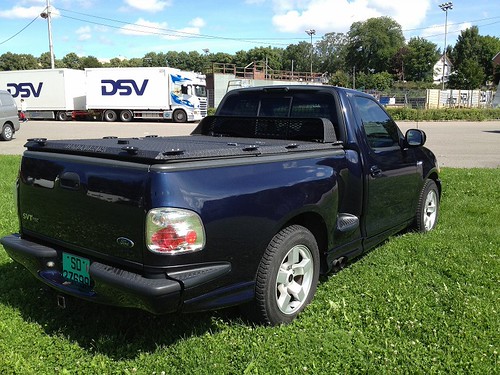
11. **”Granny Gear” 4-Speed Manuals**In the era of heavy-duty truck manuals, a super-low first gear, affectionately known as “granny low,” was a defining characteristic. Unlike the speed-optimized transmissions of today, these 4-speed manual gearboxes were specifically engineered with an extra-low first gear—a true stump-puller—reserved for extreme conditions such as hauling massive loads, slow-speed off-road crawling, or ascending treacherous inclines.
In everyday driving scenarios, when the truck was unladen, drivers typically bypassed first gear entirely, starting off in second. However, when faced with challenging tasks like towing a fully loaded trailer or navigating severely rugged terrain, engaging the granny gear was essential. Transmissions like Ford’s T-18, NP435, or GM’s SM465, with first-gear ratios often exceeding 6:1, provided an immense surge of low-speed torque, albeit with minimal acceleration, to move heavy objects with impressive ease.
This distinctive gearing provided the sheer pulling power needed to overcome monumental resistance, a stark contrast to modern transmissions geared for swift acceleration. While contemporary automatics and closer-ratio manuals have superseded this design, the “granny gear” remains a potent symbol of an era when trucks were built for uncompromising, brute-force utility, perfectly aligning with their workhorse designation.

12. **Manual Locking Hubs**Classic 4WD trucks, particularly those from the mid-20th century, relied on a direct, driver-involved method for engaging four-wheel drive: manual locking hubs. Before tackling challenging terrain, the driver would physically dismount, approach the front wheels, and manually turn knobs on the hubs. This action served to mechanically connect the front wheels directly to the axle, ensuring power transfer and maximum traction.
Though less convenient than the automated systems prevalent today, manual hubs were universally praised for their inherent robustness and elegant simplicity. Their design left little room for failure, offering drivers absolute certainty that their four-wheel drive was engaged and ready for action. This straightforward, mechanical reliability was critical for individuals operating in remote, unforgiving environments where complex electronics would be impractical.
For many off-road enthusiasts, the ritual of “getting out in the muck to lock the hubs” before venturing onto a challenging trail evokes a powerful sense of connection to their vehicle and the task at hand. While modern automatic systems prioritize convenience, often disappearing from all but the most heavy-duty trucks, the visible, tactile presence of manual locking hubs stands as an enduring emblem of rugged capability and dependable, no-frills engineering.
Read more about: Critical Safety Warnings: Understanding Hazards in Popular Baby Strollers and Car Seats
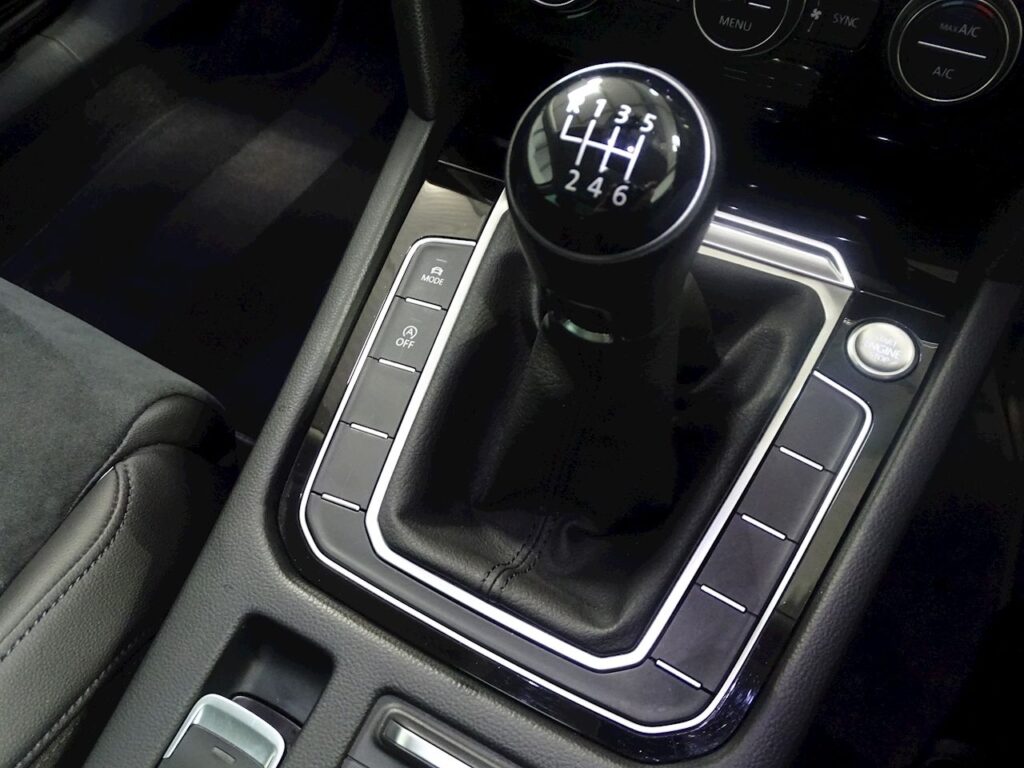
13. **Floor-Mounted 4×4 Shifter**In vintage 4WD trucks, the engagement of four-wheel drive or low range was achieved through a distinctly mechanical and tactile interface: a floor-mounted lever. Typically situated alongside the main gearshift, this secondary shifter, mechanically linked to the transfer case, offered the driver direct, unmediated control over the drivetrain. It allowed seamless transitions between 2WD, 4-High, and 4-Low, empowering the driver with explicit command over the truck’s traction capabilities.
Operating this lever often required a considerable, firm pull, and sometimes a surprising amount of muscle, particularly if the vehicle was not perfectly level or in a gentle roll. This physical engagement fostered a profound sense of connection between the driver and the machine, demanding attention and skill. It was a tangible interaction, far removed from the passive electronic push-buttons or rotary dials found in many modern trucks.
Enthusiasts of classic 4x4s frequently laud the floor-mounted shifter for its “tactile certainty,” appreciating the definitive engagement that leaves no doubt about the truck’s operational mode. This feature imbued the driving experience with a rugged, authentic feel, underscoring the workhorse nature of these vehicles. It represents a bygone era of truck operation, where direct, mechanical control was paramount, providing a sense of mastery that electronic interfaces struggle to replicate.
Read more about: The Enduring Mystery Solved: What ‘442’ Truly Means on Oldsmobile’s Legendary Muscle Car

14. **Stepside (Flareside) Beds**The stepside bed, often known as “Flareside” by Ford or “Utiline” by Dodge, presented a distinctly classic aesthetic for vintage pickups. Characterized by narrow rear fenders that sat outside the main bed structure, this design incorporated a practical step situated between the cab and the rear fender. This architectural choice became a signature look throughout the 1950s and ’60s, instantly recognizable and deeply nostalgic for enthusiasts.
More than just a styling cue, the stepside design offered genuine utility. The external rear wheels and the integrated side step provided convenient access to the cargo bed, simplifying loading and unloading tasks, especially when reaching items near the front of the bed. These beds, often featuring visible curved fenders and sometimes adorned with wooden floorboards, exuded an undeniable classic charm, perfectly marrying aesthetic appeal with everyday functionality.
As automotive design evolved, the smoother, full-width fleetside beds gained prominence, offering increased cargo volume and a more streamlined appearance. By the 1990s, the stepside style had largely faded from mainstream production, becoming a revered feature of bygone eras. Enthusiasts today fondly recall these beds not only for their vintage styling but also for the practical step that defined an era of purposeful and visually distinct work trucks.

15. **Wooden Bed Floors**In the early decades of pickup truck manufacturing, wooden plank floors were a common and practical feature in cargo beds, a stark contrast to the all-metal beds prevalent today. Strips of durable hardwood, often oak or pine, were meticulously laid lengthwise across the bed, securely fastened by sturdy metal skid strips. This construction method was not only an efficient way to build a functional bed but also imparted a distinct, timeless aesthetic to classic trucks.
The wooden bed floor offered a unique blend of practicality and visual appeal. Owners often took pride in maintaining these surfaces, famously keeping the wood polished or varnished to a rich sheen. While providing a robust surface for hauling, the wood also contributed significantly to the truck’s character. For instance, GM pickups featured wood floors as standard until 1972, with their Stepside beds continuing this tradition well into the 1980s, highlighting their enduring appeal.
Over time, the automotive industry transitioned to all-steel bed floors, driven by considerations of enhanced durability and reduced manufacturing costs. Despite this shift, the wooden bed floor remains a cherished element for collectors and restorers. Reinstating original oak or pine planks in a classic truck is often a labor of love, a tangible homage to a lost feature that symbolizes the blend of craftsmanship and utility inherent in these vintage workhorses.
Read more about: Beyond the Quick Fix: 14 Home Improvement Hacks You Might Want to Skip for Lasting Cleanliness and Durability
These incredible machines and their defining characteristics are a vibrant testament to an era when trucks were built with an unwavering commitment to purpose and endurance. They reflect a time when functionality trumped fleeting trends, where straightforward engineering meant reliability and reparability in any challenging environment. From the rugged Power Wagon to the iconic Land Cruiser, and the ingenious ‘granny gear’ to the honest simplicity of a wooden bed, these vintage workhorses remind us of the lasting power of well-built design. They not only shaped industries and landscapes but continue to inspire a deep appreciation for automotive heritage, proving that true durability never goes out of style. As we celebrate these enduring legends, we honor the spirit of an age that valued resilience above all else, keeping the legacy of these absolute workhorses alive for generations to come.

